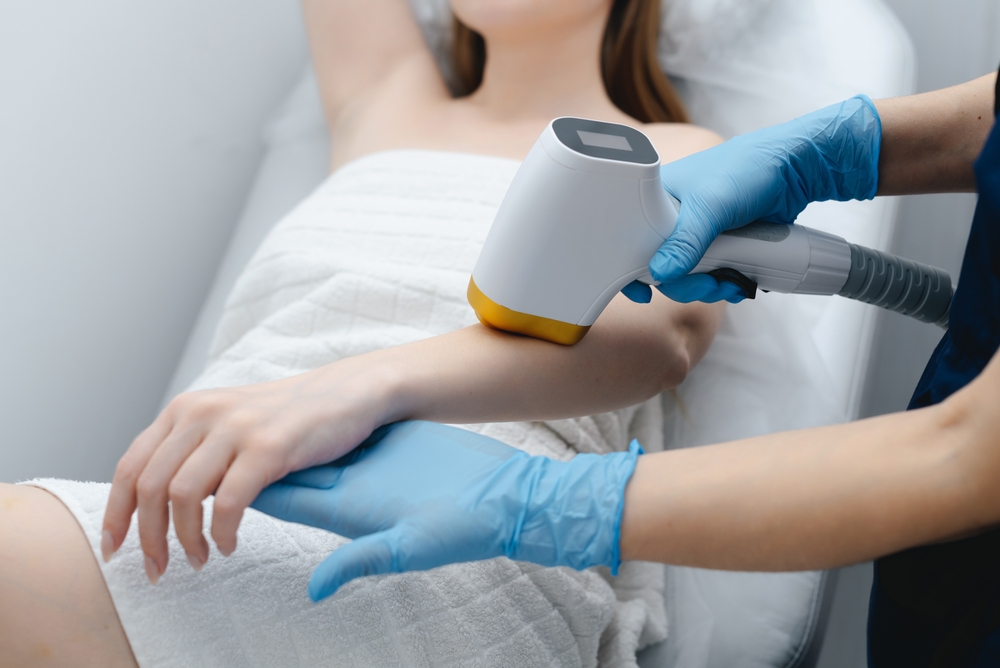The Art of Eyebrow Microblading: Precision and Permanence
Eyebrows have long been considered a defining feature of the face, framing our eyes and shaping our expressions. In recent years, the beauty industry has witnessed a surge in the popularity of eyebrow enhancement techniques, with microblading emerging as a frontrunner. This semi-permanent makeup procedure has revolutionised the way people approach their brows, offering a solution for those with sparse, overplucked, or naturally thin eyebrows. Microblading has gained traction not only for its ability to create natural-looking, fuller brows but also for its long-lasting results. As the technique continues to evolve and gain popularity, it's worth exploring the intricate details of this artform, its origins, and its impact on the beauty industry.

Initially, the technique was known as ‘feather touch’ or ‘hair-like strokes’ and was primarily used in Japan and parts of Southeast Asia. It wasn’t until the early 2000s that microblading began to gain traction in Western countries, quickly spreading across Europe and North America.
The term ‘microblading’ itself is believed to have been coined around 2010, reflecting the precise, blade-like tool used in the procedure. Since then, the technique has undergone significant refinement and has become a staple in the world of semi-permanent makeup.
The Microblading Process Explained
At its core, microblading is a form of cosmetic tattooing. However, unlike traditional tattoos that use a machine, microblading is performed manually with a handheld tool. This tool, often referred to as a microblade, consists of several tiny needles grouped together to form a blade-like shape.
The process begins with a consultation, where the technician assesses the client’s natural brow shape, facial features, and desired outcome. Using specialised measuring tools and techniques, they then map out the ideal brow shape for the client’s face.
Once the shape is agreed upon, the technician selects pigments that match the client’s natural hair colour and skin tone. The microblade is then dipped into the chosen pigment and used to create fine, hair-like strokes in the skin. These strokes are carefully placed to mimic the growth pattern of natural eyebrow hairs, resulting in a realistic, three-dimensional effect.
The entire procedure typically takes between two to three hours, with a touch-up session recommended after four to six weeks to perfect the shape and colour.
The Science Behind the Art
While microblading may seem straightforward, there’s a significant amount of science involved in achieving optimal results. Understanding skin types, pigment behaviour, and healing processes is crucial for microblading technicians.
Different skin types react differently to the procedure. Oily skin, for instance, tends to reject pigment more readily, often resulting in softer, less defined strokes. Dry skin, on the other hand, may hold onto pigment more firmly but can be more prone to scarring if not treated carefully.
The depth at which the pigment is implanted also plays a crucial role. Unlike traditional tattoos that penetrate the dermis, microblading targets the upper layers of the skin. This shallower depth is what allows the results to fade over time, typically lasting between one to three years.
The healing process is equally important. After the procedure, the brows will go through several stages of healing, including scabbing and fading. Proper aftercare is essential to ensure the best possible results and to prevent complications such as infection or premature pigment loss.
Training and Regulation in the UK
As microblading has grown in popularity, so too has the need for proper training and regulation. In the UK, while there is no specific qualification required to perform microblading, practitioners are expected to comply with local authority licensing requirements and health and safety regulations.
Many reputable training academies have emerged, offering comprehensive courses that cover not only the technical aspects of microblading but also hygiene practices, colour theory, and client consultation techniques. These courses often culminate in a certification, although it’s important to note that these certifications are not currently regulated by a central governing body.
The lack of standardised regulation has led to concerns about the quality and safety of some microblading services. As a result, there have been calls for more stringent oversight and the establishment of national standards for microblading practitioners.
The Impact on the Beauty Industry
Microblading has had a significant impact on the beauty industry, influencing trends and consumer behaviour. The promise of ‘wake up and go’ brows has appealed to many, particularly in an age where time-saving beauty routines are highly valued.
This trend has also influenced the development of other beauty products. Many cosmetic companies have released brow products designed to mimic the effects of microblading, such as fine-tipped brow pens and long-lasting brow gels.
Moreover, the popularity of microblading has paved the way for other semi-permanent makeup techniques, including lip blushing and eyeliner tattooing. These procedures follow similar principles to microblading, offering long-lasting enhancements to facial features.
The Future of Microblading
As with any beauty trend, microblading continues to evolve. New techniques are constantly being developed to improve results and cater to different preferences. For instance, ‘microshading’ or ‘powder brows’ offer a softer, more filled-in look compared to the hair-like strokes of traditional microblading.
Technological advancements are also shaping the future of microblading. Digital mapping tools and pigment-matching software are becoming more common, allowing for greater precision and customisation.
However, as the industry grows, so do concerns about its long-term effects. While microblading is generally considered safe when performed by a skilled practitioner, more research is needed to understand the potential long-term impacts of repeated procedures.
As we look to the future, it’s clear that microblading has secured its place in the beauty industry. Whether it will remain in its current form or evolve into something new remains to be seen, but one thing is certain: the art of enhancing eyebrows will continue to be a focal point in the world of beauty.




